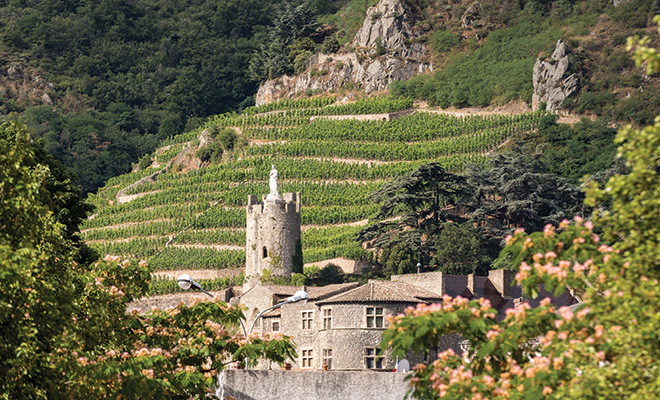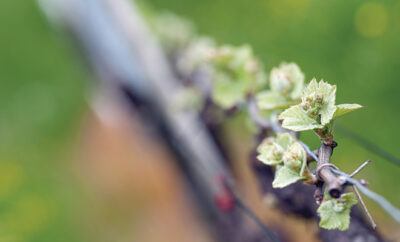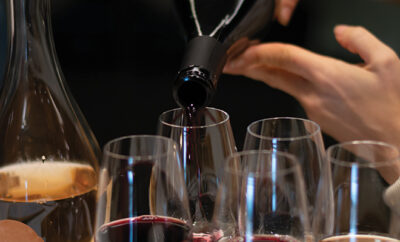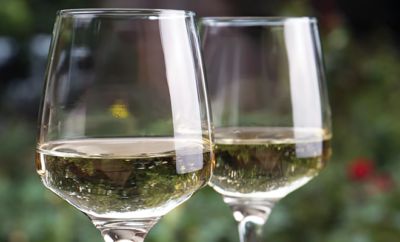
Home Grown Rhônes
Wine lovers around the world can feel particularly lucky this time of year! It’s March, when the luck of the season includes a fresh new growing cycle for our wine grape growers.
Not only are the winemakers presenting new wine releases after a year or two of aging, the rolling vineyards are a verdant green, on their path to showing vibrant new vines that will soon show delicate buds, eventually turning into the wines we love. This season is my favorite, as the loamy soil prepares the grapevines to be nourished with spring sunshine and light rains feeds the fine tendrils reaching across the vine trellis. This is idyllic beauty in the Rhône region in southern France. Or is it?
When in Rhône
Here in the “new world” of the United States, winemakers have many local sources of Rhône-style wine grape varietals to create the red and white wines we love all year long. We have ideal growing conditions for producing world class Rhône style wines right here in the wine-grape-growing regions of California’s Sierra Foothills and Central Valley as well as Washington State’s Willamette Valley. We have such dedicated enthusiasm to Rhône varietals that a group of winemakers established a group in the 1980s called the Rhone Rangers. This group is dedicated to production and promotion of wines containing at least 75 percent Rhône wine grape varietals.
Let’s leave the passport at home and explore a bit of the Rhône Valley right here at home. Our local American Viticulture Areas have a few of the same unique environmental and agricultural qualities that make the Rhône region home to white wines including viognier, roussanne, bourboulenc, picpoul and clairette. Grenache, syrah, mourvèdre, carignan and cinsault are the most globally known red wine varieties credited to the region as well. France’s Rhône Valley is long and lies north-south, covering many different climates and soil compositions including ground that is clay or loamy and intermittently rocky; these soils eventually provide rich textures in the juice produced from their vineyards. On the west coast of the U.S., we have similar climates and qualities in our AVAs, producing extraordinary offerings of these beautiful wine varietals. Even though California’s overall climate is warmer than the Rhône Valley, the resulting wines are very approachable, less tannic and easy on the pocketbook.
Distinctive American Rhônes
Although the historic and distinguished wines of Châteauneuf-du-Pape, France. continue to inspire wine makers and wine lovers around the world, we are fortunate to have award-winning and distinctive Rhône varietals just a car ride, day trip or destination vacation away, and likely at your favorite wine retailer. Whether you choose red, rose, white wines or blends, Rhône-styled wines are easy drinking and perfect for every day with nearly all diets and menus. The body, acidity and balance of these red wine blends and white wine blends are earning high marks from wine critics. Even with these accolades, prices for these gems haven’t caught up to the awards, so it’s a great time to taste through a few bottles and stock up on your favorites.
White Rhône wine varietals grown in the Lodi AVA of California are especially gaining notoriety. Grenache blanc, picpoul blanc and clairette blanche enjoy tantalizing our palates with very light floral notes that give way to crisp, bright fruit on the tongue. These beautiful wines pair with dry aged cheeses, dried fruits, spicy sauces and marinades. Any main courses you prepare that contain these ingredients will share the stage nicely with these complex white wines.
The most popular red Rhône wine varietals may be grenache and syrah; however, their friends carignan, cinsault, mourvedre and petite sirah add balance, earthiness, color and spice, providing blends that have enough structure to pair with fish dishes such as salmon, swordfish and halibut or beef, pork roasts and savory pasta dishes. California’s Central Coast and Sierra Foothills are paving the way for incredible single-varietal bottlings as well as red wine blends. The wines of Paso Robles, located along the Central Coast of California, are closely focused on producing Rhône-specific wines. Surprisingly, this one region’s vineyard plantings are about two-thirds the size of Napa’s, totaling close to 30,000 acres of wine grapes grown on the eastern side of the San Lucia Mountain range that benefits from the moisture off the Pacific Ocean.
If your March menus include lamb, brisket, corned beef and spring vegetables such as eggplant, potatoes, zucchini and beans, definitely explore the complementary qualities of Rhône styled wines including the classic GSM blend of grenache, syrah and mourvedre. Definitely visit your local winery tasting room, where fresh Rhône varietals may greet you like an Irish blessing. Cheers! ■
Sources: en.wikipedia.org, winespectator.com, winemag.com, sfwinecomp.com, splendidtable.org and seattletimes.com.







